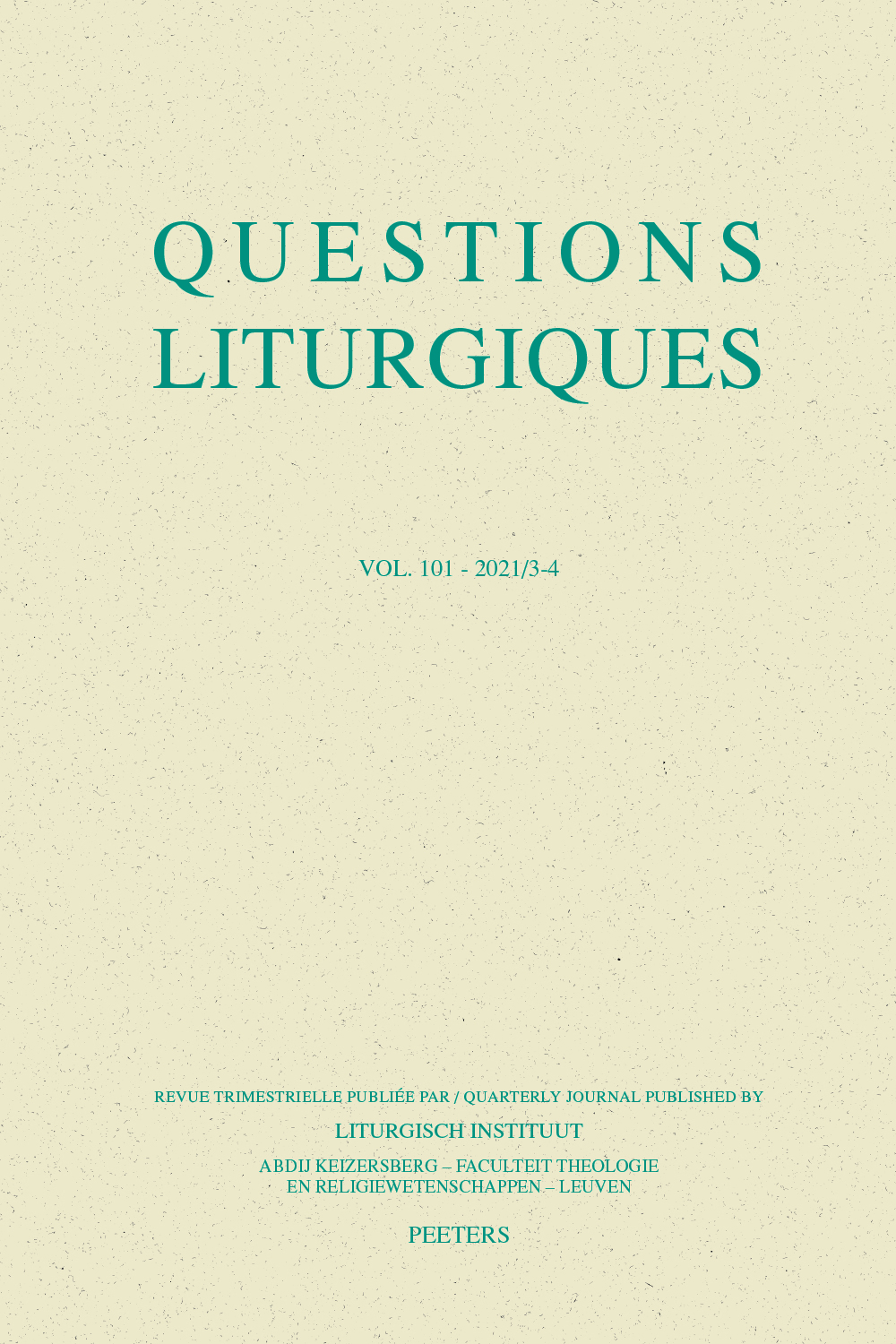 previous article in this issue previous article in this issue | next article in this issue  |

Preview first page |
Document Details : Title: The Definition of Liturgy and Architecture Subtitle: Based on the Sources which Influenced the 20th Century Monk and Architect Dom Hans van der Laan OSB Author(s): REMERY, Michel Journal: Questions Liturgiques/Studies in Liturgy Volume: 93 Issue: 1-2 Date: 2012 Pages: 100-116 DOI: 10.2143/QL.93.1.2174119 Abstract : When defining what liturgy is, the Dutch monk and architect Dom Hans van der Laan OSB (1904-1991) based his work on the definitions of liturgy by Dom Prosper Guéranger OSB and the Second Vatican Council. In these definitions liturgy includes all the man-made buildings and objects, but also gestures and sounds that the Second Vatican Council call ‘sensorily perceptible signs’. When unravelling the origins of the definition of liturgy by Guéranger, one comes across several important sources that led him to the formulation of this definition. These sources include three 18th-century writings on liturgy. Van der Laan also gave extensive thought to the theory of architecture and man’s making of all kind of objects, which found their highest expression in liturgy. Laying Guéranger’s and Van der Laan’s definition parallel to the definition of architecture as used by Van der Laan, one is tempted to conclude that both liturgy and architecture share the same definition. A joint definition for both liturgy and architecture opens new perspectives in the research of the close relationship between these fields. Dom Hans van der Laan’s approach towards such a definition of liturgy and architecture, in combination with the often-cite definition of liturgy by Dom Guéranger can play an important role in this direction. Pour définir ce qu’est la liturgie le moine et architecte hollandais Dom Hans van der Laan osb (1904-1991) a établi sa recherche sur les définitions de la liturgie proposées par Dom Prosper Guéranger osb et le Second Concile du Vatican. Dans ces définitions la liturgie comprend tous les bâtiments et objets construits manuellement, mais également les gestes et sons que le Second Concile du Vatican appelle ‘signes sensibles perceptibles’. Quant on recherche les origines de la définition de la liturgie par Guéranger on découvre des sources importantes qui l’ont conduit à la formulation de sa définition. Ces sources comprennent trois écrits du 18e siècle sur la liturgie. Van der Laan présente ainsi un jugement extensif de la théorie de l’architecture et de la fabrication manuelle de toutes sortes d’objets qui trouvent leur expression la plus noble dans la liturgie. En plaçant en parallèle la définition de Guéranger et de van der Laan quant à la l’architecture telle qu’elle est proposée par ce moine hollandais, on est porté à conclure que la liturgie et l’architecture comportent une même définition. Une définition à la fois unie pour la liturgie et l’architecture ouvre des nouvelles perspectives dans la recherche de la relation étroite entre ces deux champs d’action. L’approche de Dom Hans van der Laan envers une telle définition de la liturgie et de l’architecture, en combinaison avec la définition souvent citée de la liturgie par Dom Guéranger, peut assumer un rôle important dans cette direction. |
|


